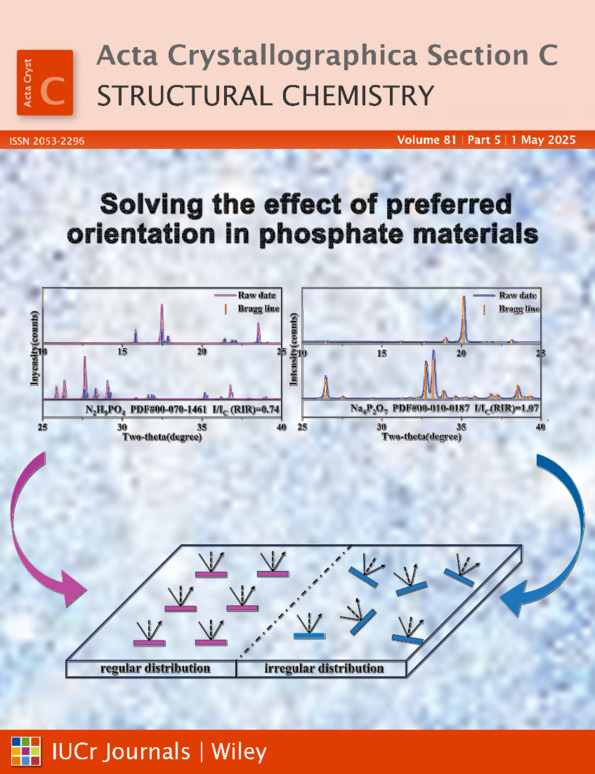Crystallographic studies of piperazine derivatives of 5,5-dimethylhydantoin in the search for structural features of α1-adrenoreceptors antagonists
Abstract
A number of piperazine derivatives of hydantoin display high affinity for α1-adrenoreceptors and antagonistic properties, which make them potent hypotensive agents. In order to study the correlations between affinity for α1-adrenoreceptors and molecular structures, the crystal structures of six piperazine derivatives of 5,5-dimethylhydantoin were determined by X-ray diffraction, namely, 4-(3-{3-[(2,4-dichlorophenyl)methyl]-5,5-dimethyl-2,4-dioxoimidazolidin-1-yl}-2-hydroxypropyl)-1-phenylpiperazine-1,4-diium dichloride monohydrate ethyl acetate hemisolvate, C25H32Cl2N4O32+·2Cl−·H2O·0.5C4H8O2 (1), 4-(2-cyanophenyl)-1-(3-{3-[(2,4-dichlorophenyl)methyl]-5,5-dimethyl-2,4-dioxoimidazolidin-1-yl}-2-hydroxypropyl)piperazin-1-ium chloride acetonitrile monosolvate, C26H30Cl2N5O3+·Cl−·C2H3N (2), 1-(3-{3-[(2,4-dichlorophenyl)methyl]-5,5-dimethyl-2,4-dioxoimidazolidin-1-yl}-2-hydroxypropyl)-4-(3,4-dimethylphenyl)piperazin-1-ium chloride, C27H35Cl2N4O3+·Cl− (3), 1-(3-{3-[(2,4-dichlorophenyl)methyl]-5,5-dimethyl-2,4-dioxoimidazolidin-1-yl}-2-hydroxypropyl)-4-(3-methoxyphenyl)piperazin-1-ium chloride, C26H33Cl2N4O4+·Cl− (4), 4-(2,3-dichlorophenyl)-1-(3-{3-[(2,4-dichlorophenyl)methyl]-5,5-dimethyl-2,4-dioxoimidazolidin-1-yl}-2-hydroxypropyl)piperazin-1-ium chloride 0.2-hydrate, C25H29Cl4N4O3+·Cl−·0.2H2O (5), and 3-[(2,4-dichlorophenyl)methyl]-1-{3-[4-(3,4-dichlorophenyl)piperazin-1-yl]-2-hydroxypropyl}-5,5-dimethylimidazolidine-2,4-dione, C25H28Cl4N4O3 (6). The compounds crystallize in the centrosymmetric triclinic space group, except for 2, which crystallizes in the monoclinic space group P21/c. For all six compounds, one molecule is observed in the asymmetric unit. The molecule of 1 is doubly protonated at both N atoms of the piperazine ring, whereas 2, 3, 4 and 5 are only protonated at one ring N atom. The protonated N atoms are engaged in charge-assisted hydrogen bonds with the chloride anions, and in 1 the N atom interacts with the chloride anion via the water molecule. The crystal packing in the protonated molecules (1–5) is in each case dominated by a network of N—H+…Cl−, O—H…Cl− and C—H…Cl− hydrogen bonds, while in the base molecule of 6, O—H…O hydrogen bonds dominate.




